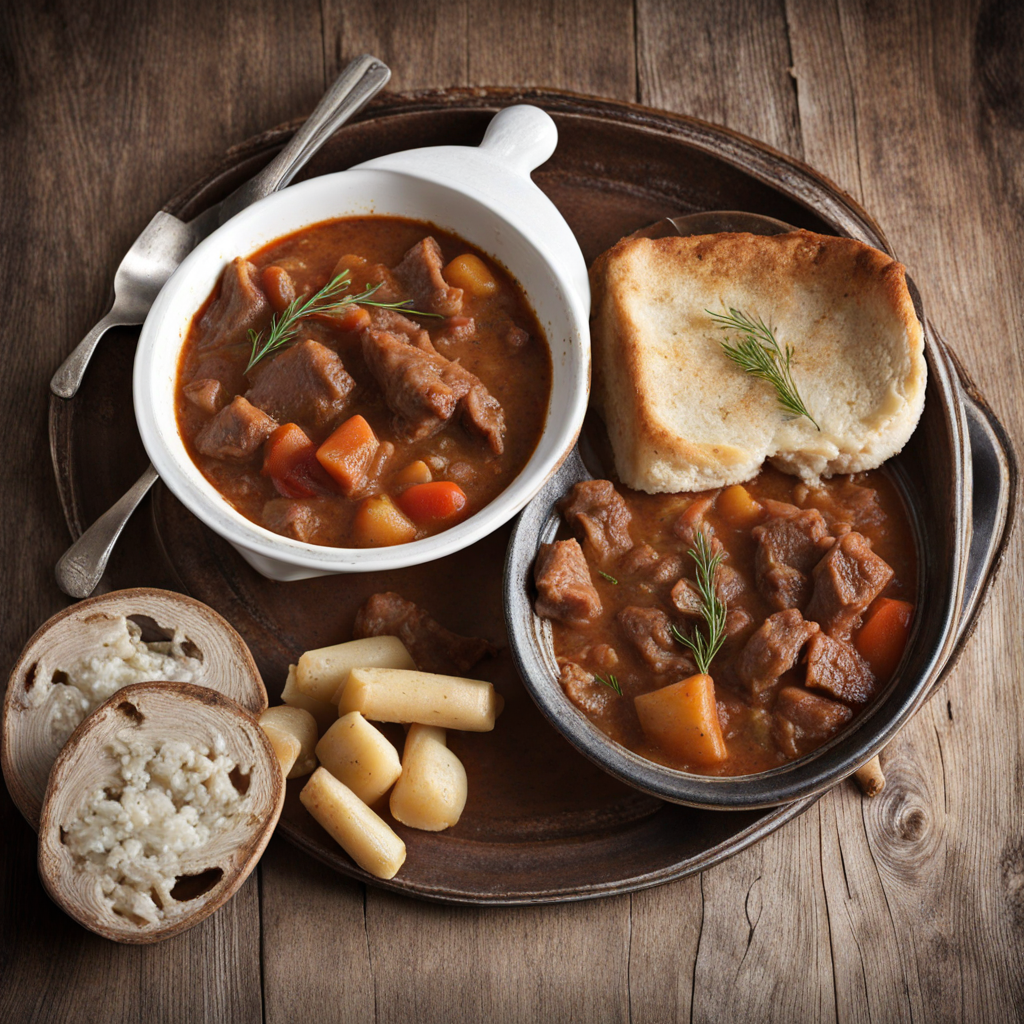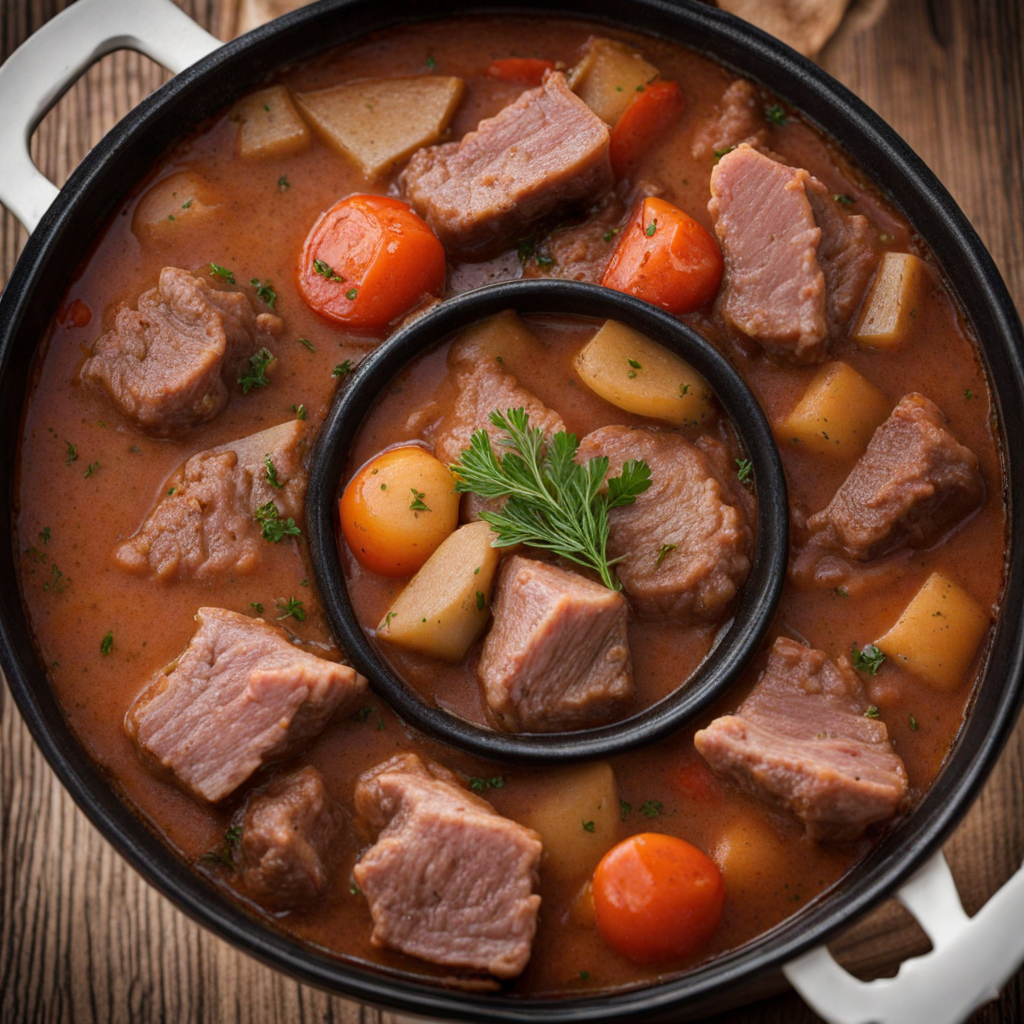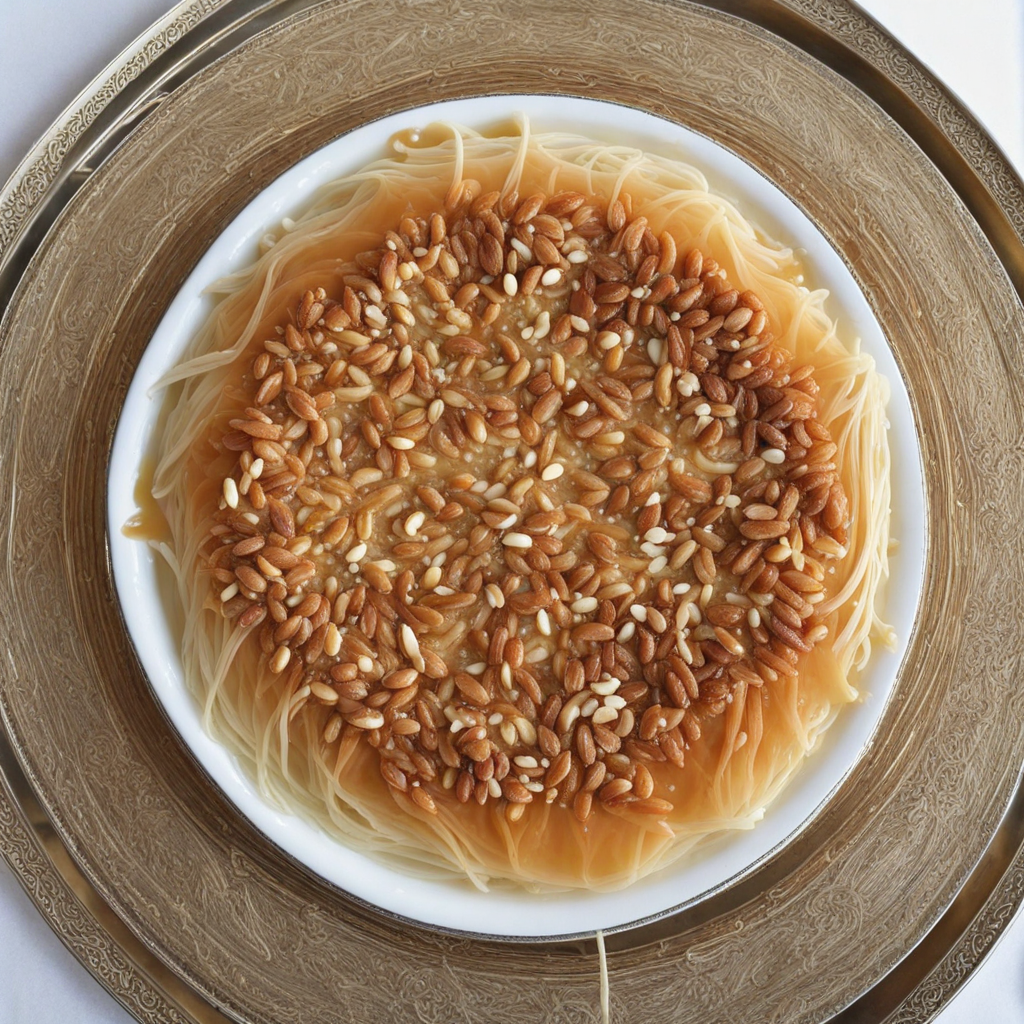Jash
Jash is a traditional dish from Kosovo that embodies the rich culinary heritage of the region. This savory delight is primarily made from a base of boiled grains, typically cornmeal, which is then combined with a range of aromatic spices and herbs. The dish is often enhanced with the addition of local cheeses, creating a creamy texture that beautifully balances the earthy flavors of the grains. Jash is not merely a meal but a celebration of the land, reflecting the agricultural abundance and the deep-rooted customs of the Kosovar people. What sets Jash apart is its versatility; it can be served as a side dish or a main course, depending on the occasion. Many families have their own cherished recipes passed down through generations, which may include variations in the choice of spices or additional ingredients such as sautéed vegetables, meats, or even a drizzle of local olive oil. This adaptability allows Jash to be enjoyed in various settings, from casual family dinners to festive gatherings, making it a beloved staple in Kosovar cuisine. The experience of tasting Jash is a journey through the flavors of Kosovo. Each bite offers a harmonious blend of textures and tastes, from the nutty undertones of the cornmeal to the sharpness of the cheese and the warmth of the spices. It's often accompanied by a side of homemade bread or served alongside pickled vegetables, enhancing the overall flavor profile. Whether you are discovering Jash for the first time or revisiting its comforting taste, it promises to leave a lasting impression and a desire to explore more of Kosovo's culinary gems.
How It Became This Dish
Jash: A Culinary Heritage of Kosovo #### Origins Jash, a traditional dish from the Balkans, particularly Kosovo, holds a special place in the hearts and homes of its people. The name "Jash" is derived from the Albanian word for "to eat" or "to feast," which perfectly encapsulates the dish's essence. Its roots can be traced back to the Ottoman Empire, which profoundly influenced the culinary landscape of the region from the 14th century onwards. The Ottomans brought with them a variety of flavors and cooking techniques, introducing new ingredients and methods that would meld with the local customs and traditions of the Balkans. Jash is primarily made from lamb or goat meat, often cooked with rice and a variety of spices, including black pepper, garlic, and sometimes saffron for a touch of luxury. The method of preparation typically involves slow-cooking the meat to ensure tenderness, allowing the flavors to meld beautifully. The dish is often garnished with fresh herbs, enhancing its aromatic qualities and making it a feast for both the eyes and the palate. #### Cultural Significance In Kosovo, Jash is more than just a meal; it is a symbol of hospitality and community. Traditionally served during significant life events, such as weddings, religious holidays, and family gatherings, it represents abundance and the joy of sharing with loved ones. The preparation of Jash often involves family members coming together, each contributing their skills—whether it be marinating the meat, preparing the rice, or setting the table. This communal aspect of cooking reinforces familial bonds and emphasizes the importance of togetherness in Kosovar culture. The dish also has religious significance, particularly within the context of Islamic traditions. As the majority of Kosovars identify as Muslims, Jash is often prepared during Ramadan and Eid celebrations. The act of sharing this dish during these holy periods underscores themes of generosity, gratitude, and the importance of community in spiritual practice. It serves as a reminder of the blessings of sustenance and the joy of coming together in celebration. #### Development Over Time As Kosovo has undergone significant political and social changes, the preparation and consumption of Jash have evolved, reflecting the resilience and adaptability of its people. During the tumultuous periods of the 20th century, particularly during the Yugoslav Wars of the 1990s, traditional dishes like Jash became symbols of cultural identity and resistance. Amidst the chaos, preparing and sharing such meals helped maintain a sense of normalcy and continuity in daily life. In contemporary Kosovo, Jash has found its way into restaurants and culinary festivals, where chefs experiment with traditional recipes while honoring their roots. The rise of the farm-to-table movement has also brought renewed attention to local ingredients, encouraging chefs to source lamb and goat meat from nearby farms. This not only supports local agriculture but also ensures the dish retains its authentic flavors. Chefs may introduce modern twists, such as using alternative grains in place of rice or incorporating local vegetables, but the essence of Jash—a heartwarming, communal meal—remains intact. The rise of tourism in Kosovo has also played a role in the dish's development. As visitors seek authentic culinary experiences, Jash is often featured prominently on menus, providing an opportunity for Kosovars to showcase their rich food heritage. Culinary tours that focus on traditional cooking methods and local ingredients have become increasingly popular, further elevating Jash as a representative dish of the region. #### Modern Interpretations and Global Influence In recent years, the global interest in Balkan cuisine has grown, with dishes like Jash coming to the forefront. As food enthusiasts and chefs from around the world discover Kosovo's culinary treasures, Jash has begun to appear in international food festivals and culinary competitions. This exposure not only celebrates the dish but also encourages dialogue about Kosovo's culture and history. Modern interpretations of Jash have emerged, reflecting the diverse influences of contemporary cooking. Some chefs experiment by incorporating fusion elements, blending traditional Balkan flavors with Mediterranean or Middle Eastern spices. These adaptations maintain the spirit of Jash while inviting new audiences to appreciate its rich heritage. Such innovations have sparked discussions about authenticity in cuisine, challenging the notion of what defines a traditional dish. #### Conclusion Jash is more than just a meal; it is a cultural artifact that tells the story of Kosovo's history, resilience, and communal spirit. From its Ottoman roots to its contemporary iterations, Jash embodies the flavors of a region marked by rich traditions and diverse influences. Its significance as a dish of celebration, hospitality, and unity continues to thrive, ensuring that it remains at the heart of Kosovar culture. As Kosovo moves forward, the legacy of Jash will undoubtedly evolve, but its core values of sharing, community, and culinary artistry will persist. Whether enjoyed at a family gathering, a festive occasion, or a local restaurant, Jash will always evoke a sense of belonging and remind us of the power of food to connect us across generations and cultures. Through every bite, Jash invites us to partake in the stories and traditions of the people of Kosovo, making it not only a meal but a celebration of life itself.
You may like
Discover local flavors from Kosovo







